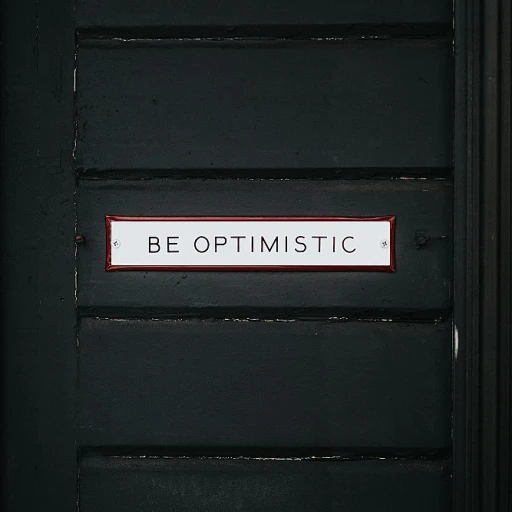
Understanding the Need for Change in Procurement
Recognizing the Imperative for Change
In today's rapidly evolving business landscape, the need for change in procurement is more pressing than ever. Organizations are increasingly aware that sticking to traditional procurement processes can hinder their ability to stay competitive. The procurement function must adapt to new challenges, such as globalization, technological advancements, and shifting market demands. This transformation is not just about cost savings but also about enhancing efficiency and building stronger supplier relationships.
Identifying Drivers of Change
Several factors drive the necessity for change in procurement. Firstly, the integration of new technologies is reshaping how procurement teams operate. From automation to advanced analytics, technology is a key enabler of more efficient procurement processes. Additionally, the growing emphasis on sustainability and ethical sourcing requires procurement functions to rethink their strategies and align with broader organizational goals.
Addressing Resistance to Change
One of the significant hurdles in procurement transformation is resistance to change. Stakeholders, including procurement teams and suppliers, may be hesitant to adopt new processes or technologies. This resistance can stem from a lack of understanding, fear of the unknown, or concerns about job security. Effective change management strategies are essential to address these concerns and facilitate a smooth transition.
Importance of Training and Communication
Training and communication are crucial components of successful change management in procurement. Providing comprehensive training programs helps ensure that all stakeholders understand the new processes and technologies. Open and transparent communication fosters trust and encourages buy-in from all parties involved. By prioritizing these elements, organizations can minimize resistance and enhance the adoption of new procurement practices.
For more insights on how effective management software can aid in navigating change, consider exploring this resource.
Key Challenges in Implementing Change Management
Addressing Barriers and Resistance
Implementing change management in procurement can be fraught with challenges. Key among these is overcoming resistance to change. Procurement teams often adhere to established processes, making any deviation seem daunting. But, addressing these barriers head-on is crucial for successful procurement transformation.
One common challenge is resistance from individuals within the procurement function. This resistance can stem from a lack of understanding of the change, fear of losing control, or discomfort with new technologies. Effective communication is essential in mitigating these concerns. Regularly engaging with stakeholders, including procurement personnel, suppliers, and other members of the supply chain, can ease the adoption process.
Aligning Goals with Stakeholders
Aligning the goals of change management with the expectations of all relevant stakeholders is another hurdle. Different stakeholders have varying interests, which can complicate the alignment of procurement processes. Establishing clear objectives and demonstrating the potential benefits, such as cost savings and enhanced supplier relationships, can help garner support.
To navigate these challenges, organizations should leverage best practices and frameworks such as the ADKAR model, which emphasizes awareness, desire, knowledge, ability, and reinforcement. Providing adequate training throughout the change process ensures that all involved parties are prepared and informed.
Managing the Transition Period
Another significant challenge is managing the transition period during the change process. The transition can be turbulent, with potential disruptions in procurement requests and purchase orders. Clear protocols should be established to minimize impact on the daily operations of the supply chain.
Case studies from organizations that have successfully implemented procurement changes can provide valuable insights and guidance. To explore further on how to tackle these challenges effectively, consider consulting these essential reads for navigating change in management. By learning from real-world examples, procurement leaders can better prepare for the journey ahead.
Strategies for Effective Change Management
Building a Framework for Change
Implementing effective change management in procurement requires a structured approach. A well-defined framework helps in navigating the complexities of procurement transformation. One of the widely recognized models is the ADKAR model, which focuses on Awareness, Desire, Knowledge, Ability, and Reinforcement. This model can guide procurement teams in managing resistance and fostering adoption among stakeholders.
Engaging Stakeholders and Suppliers
Stakeholder engagement is crucial for successful procurement change. Effective communication with both internal teams and external suppliers ensures alignment and minimizes resistance to change. Regular updates and feedback loops can help in addressing concerns and building trust. Establishing strong supplier relationships is also key to ensuring a smooth transition in procurement processes.
Training and Development
Training is a critical component of any change management strategy. Providing procurement teams with the necessary skills and knowledge to adapt to new processes and technologies is essential. Tailored training programs can facilitate the adoption of procurement technologies and improve overall efficiency in the supply chain.
Leveraging Technology for Transformation
Technology plays a significant role in procurement transformation. Implementing advanced procurement technologies can streamline processes, enhance communication, and drive cost savings. However, it is important to ensure that the technology aligns with the organization's goals and is user-friendly to encourage adoption.
Continuous Improvement and Feedback
Change management is an ongoing process. Regularly measuring success and seeking feedback from stakeholders can help in identifying areas for improvement. Utilizing case studies and best practices from other organizations can provide valuable insights into effective change management strategies. For more on understanding and measuring adaptability in supply chains, visit this resource.
Role of Leadership in Change Management
The Crucial Role of Leadership in Navigating Change
In the context of procurement change, leadership plays an indispensable role in driving successful change management. The procurement function often faces resistance change as stakeholders are accustomed to existing processes and procedures. Here, effective leadership is the catalyst that propels the organization forward, ensuring transformation is embraced and not hindered.
Leaders facilitate the change by setting a clear vision for the transformation process. They communicate the reasons for change to all stakeholders, articulating the value it brings not just to the organization, but also to individuals involved in the procurement processes. Transparent communication can significantly reduce resistance, easing the adoption process for new procurement technologies and promoting effective change across the entire supply chain.
Apart from communication, leaders must also focus on building a robust support system. The ADKAR model offers a useful framework, focusing on Awareness, Desire, Knowledge, Ability, and Reinforcement. Leaders should ensure that everyone from procurement teams to suppliers is aligned with these principles through ongoing training and support. This approach not only aids in smoother transitions but also fosters accountability and ownership amongst the teams.
The commitment shown by leaders in the process can foster a positive attitude towards change and reinforce the importance of transforming procurement functions. By effectively managing supplier relationships, cost savings, and procurement requests, leaders can ensure that changes in procurement are not only implemented but also sustained over time.
In summary, leadership is the anchor of change management within procurement. When leaders demonstrate accountability and articulate a vision that resonates with their team, the procurement change becomes not only feasible but also impactful, paving the way for streamlined procurement processes and a more agile supply chain.
Technology's Impact on Change Management
The Role of Technological Innovation
Embracing technology is a fundamental aspect of transforming procurement processes. As organizations initiate process changes, technology adoption can enhance efficiency and streamline operations. However, the integration of new technologies often meets resistance from both within and outside the organization. Overcoming this resistance requires careful planning, comprehensive training, and clear communication with all stakeholders.
Enhancing Communication and Collaboration
An essential element of change management is improving how teams communicate and collaborate, especially when introducing new technological systems. Procurement teams should involve all relevant parties early in the planning stages, ensuring everyone understands the potential benefits and the expected changes in the supply chain. Encouraging open dialogue about the procurement change will foster a supportive environment for effective adoption.
Optimizing Procurement Processes
Technology plays a critical role in optimizing procurement processes, like streamlining the purchase order process or facilitating better supplier management. Modern procurement technologies can aid in data analysis, helping organizations identify cost savings opportunities. These tools also assist in procurement transformation, enabling the modification of existing systems to meet strategic business goals.
Supporting Change through User Adaptability
For technology to truly drive change, it must be user-friendly and have a tangible positive impact on stakeholders. Key strategies include pilot programs and training sessions tailored to various departments within the organization, further fostering an atmosphere of effective change. Case studies of successful technology integration in procurement often highlight the importance of a gradual rollout, allowing time for adjustment and addressing unforeseen challenges.
Leveraging Technology for Long-Term Success
While adopting new technologies requires initial investments of both time and resources, the long-term impact on procurement can be incredibly beneficial. By leveraging cutting-edge solutions, companies not only enhance their current procurement function but also set the stage for future innovations. Continued evaluation of the system's effectiveness and ongoing training will ensure continuous improvement and alignment with organizational goals.












